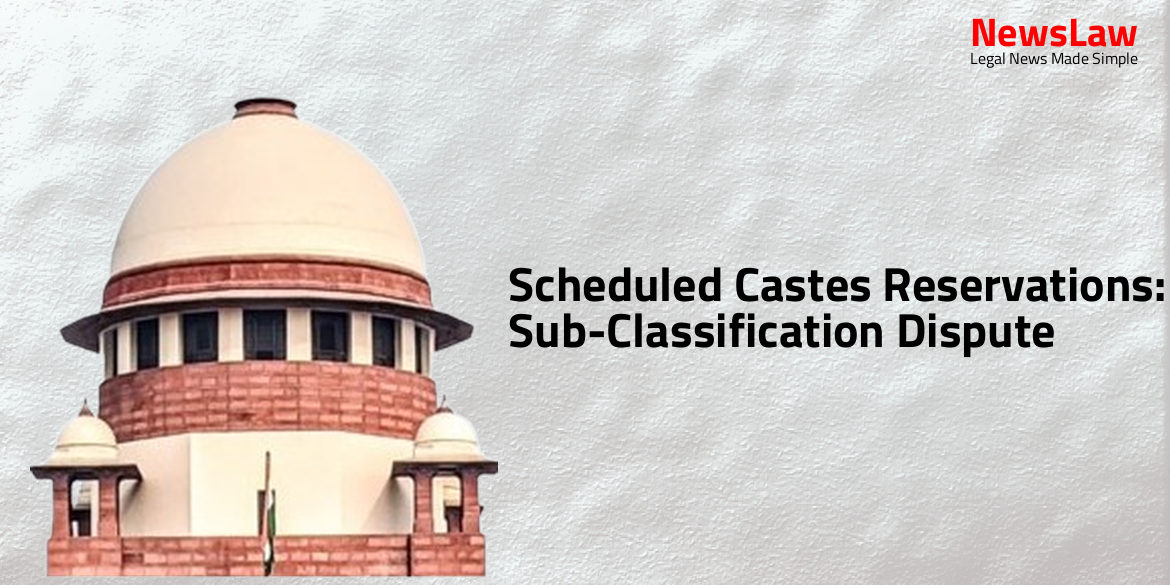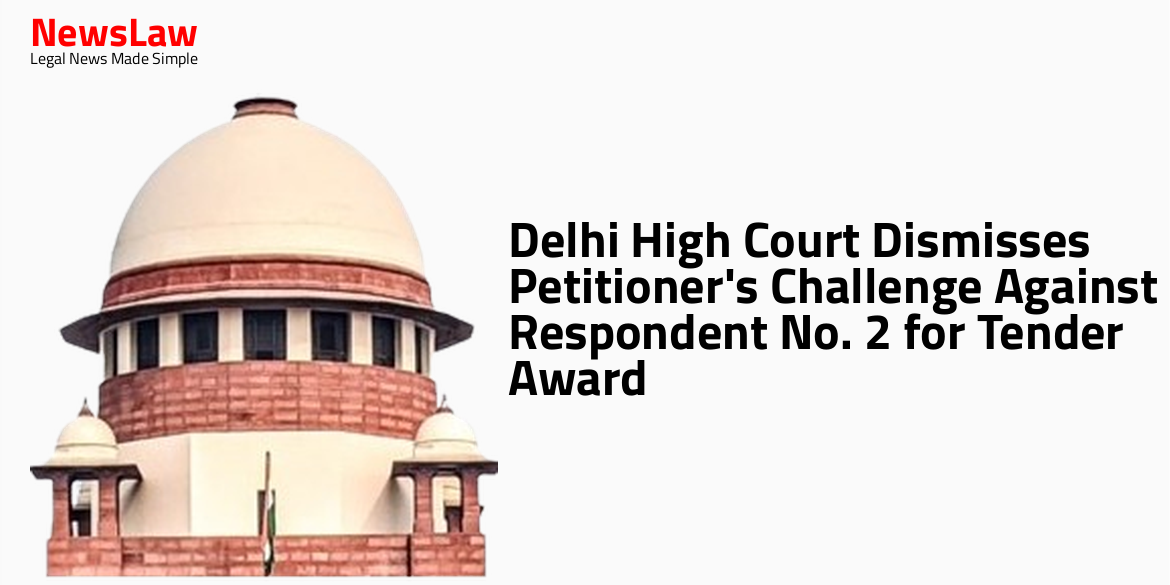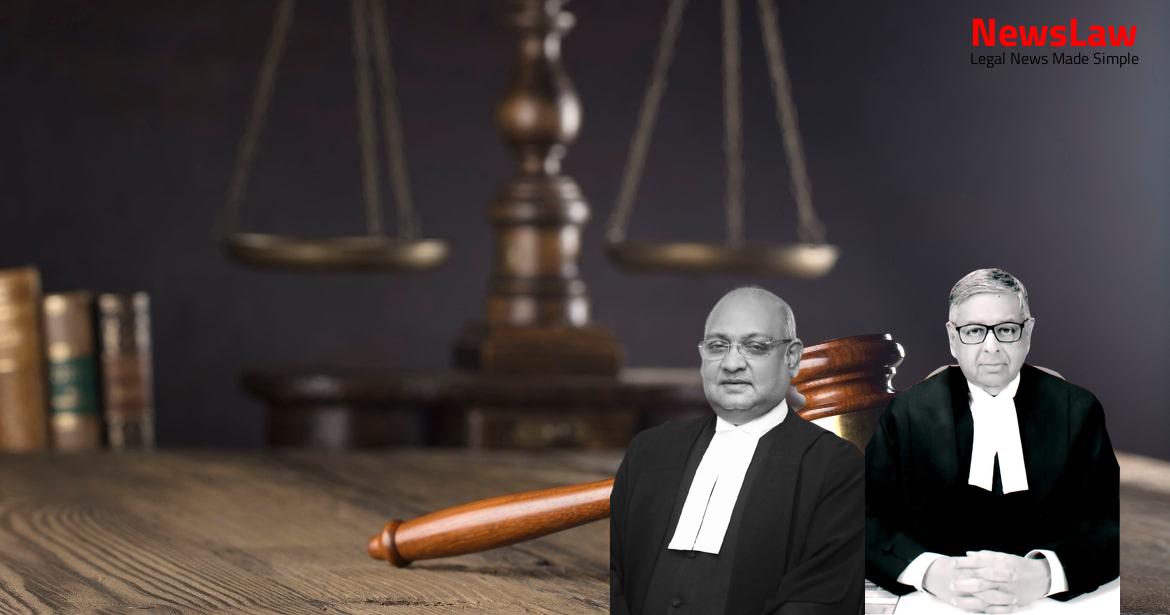The Supreme Court of India addressed a significant legal dispute regarding sub-classification within Scheduled Castes reservations. The case delved into the constitutionality of distributing benefits equitably and the permissibility of further classification within the Scheduled Castes. Stay updated as we explore the complexities of this issue and the implications of the Court’s ruling.
Facts
- Block A consisted of 36 remaining castes in the list of Scheduled Castes for the State.
- The Act was enacted based on the recommendations of the Ramachandran Raju Commission.
- Legal proceedings were initiated under Article 226 of the Constitution to challenge the validity of Section 4(5) of the Punjab Act.
- Block B included Chamars, Jatia Chamars, Rahgars, Raigars, and Ramdasias or Ravidasias.
- The High Court of Punjab and Haryana declared Section 4(5) unconstitutional
- State appealed against the High Court’s order
- Respondents relied on the Constitution Bench judgment in Chinnaiah case
- State enacted a law to replace the Ordinance during pending proceedings
- The new law provided for ‘Rationalisation of Reservations’ among Scheduled Castes into four groups
- High Court quashed the notification citing unconstitutionality in sub-classifying Scheduled Castes
- Special Leave Petitions challenging High Court’s judgment were tagged with Punjab Act challenge
- Proceedings initiated under Article 226 to challenge the constitutional validity of the notification
- State Government promulgated the Andhra Pradesh Scheduled Castes (Rationalisation of Reservations) Ordinance 1999
- Quota for Scheduled Castes in government jobs was subdivided into Block A and Block B
- Validity of Andhra Pradesh Scheduled Castes (Rationalisation of Reservations) Act 2000 was to be adjudicated by a three-judge Bench
Also Read: NEET (UG) 2024 Examination Integrity Case: Supreme Court Verdict
Issue
- The issue revolves around the model of reservations for the sub-classified classes within the Scheduled Castes.
- Two models for reservation are discussed and analyzed for their constitutionality.
- Dispute among various sub-classified classes within the Scheduled Castes claiming differential treatment based on privilege level.
- Focus on whether sub-classification of a reserved class is permissible under Articles 14, 15, and 16 of the Constitution.
- Discussion on whether Scheduled Castes are a homogenous or heterogenous grouping.
- Analysis of whether Article 341 establishes a homogenous class through the deeming fiction and any limits on sub-classification.
Also Read: Mineral Royalties: A Constitutional Conundrum
Arguments
- The petitioners argued that the State had the prerogative to decide the extent of reservations.
- They contended that sub-classification within the Scheduled Castes was impermissible under Article 14.
- The argument was made that the benefits of reservations must be distributed equitably and supplemented with additional measures like training.
- The petitioners also highlighted the importance of adopting a uniform yardstick for providing benefits to the Scheduled Castes.
- They emphasized that sub-classification would tinker with the Presidential list and violate Article 14.
- It was argued that further classification within the Scheduled Castes would not be reasonable, and a common yardstick should be used to provide benefits.
Also Read: Case of Dispute in Film Certification: Sony Pictures v. Disability Rights Advocate
Analysis
- Article 341 grants the President the power to notify castes, races, or tribes as Scheduled Castes for a State or Union Territory.
- Parliament has the authority to include or exclude any caste, race, tribe, or group from the list of Scheduled Castes specified by the President under Article 341.
- The State Legislature of Punjab enacted the Punjab Scheduled Castes and Backward Classes (Reservation in Services) Act 2006 for reservation in services for Scheduled Castes and Backward Classes.
- Article 16 guarantees equality of opportunity for all citizens in matters of employment or appointment under the State, prohibiting discrimination based on various grounds.
- The power to make reservations under Article 16(4) can be exercised by the State not only for appointments but also for selection posts.
- Article 366(24) defines Scheduled Castes based on Article 341, granting the President the power to specify these castes.
- The Constitution limits the power to include or exclude castes from the Presidential List under Article 341(2) specifically to Parliament.
- The Government of India (Scheduled Castes) Order, 1936 specifies the eligibility criteria for Scheduled Castes under certain provisions of the Government of India Act, 1935.
- The majority judgments in N.M. Thomas do not indicate that Scheduled Castes are a homogeneous group.
- Sub-classification within the Scheduled Castes is deemed impermissible based on the reading of the majority judgments.
Case Title: THE STATE OF PUNJAB Vs. DAVINDER SINGH (2024 INSC 562)
Case Number: C.A. No.-002317-002317 – 2011



